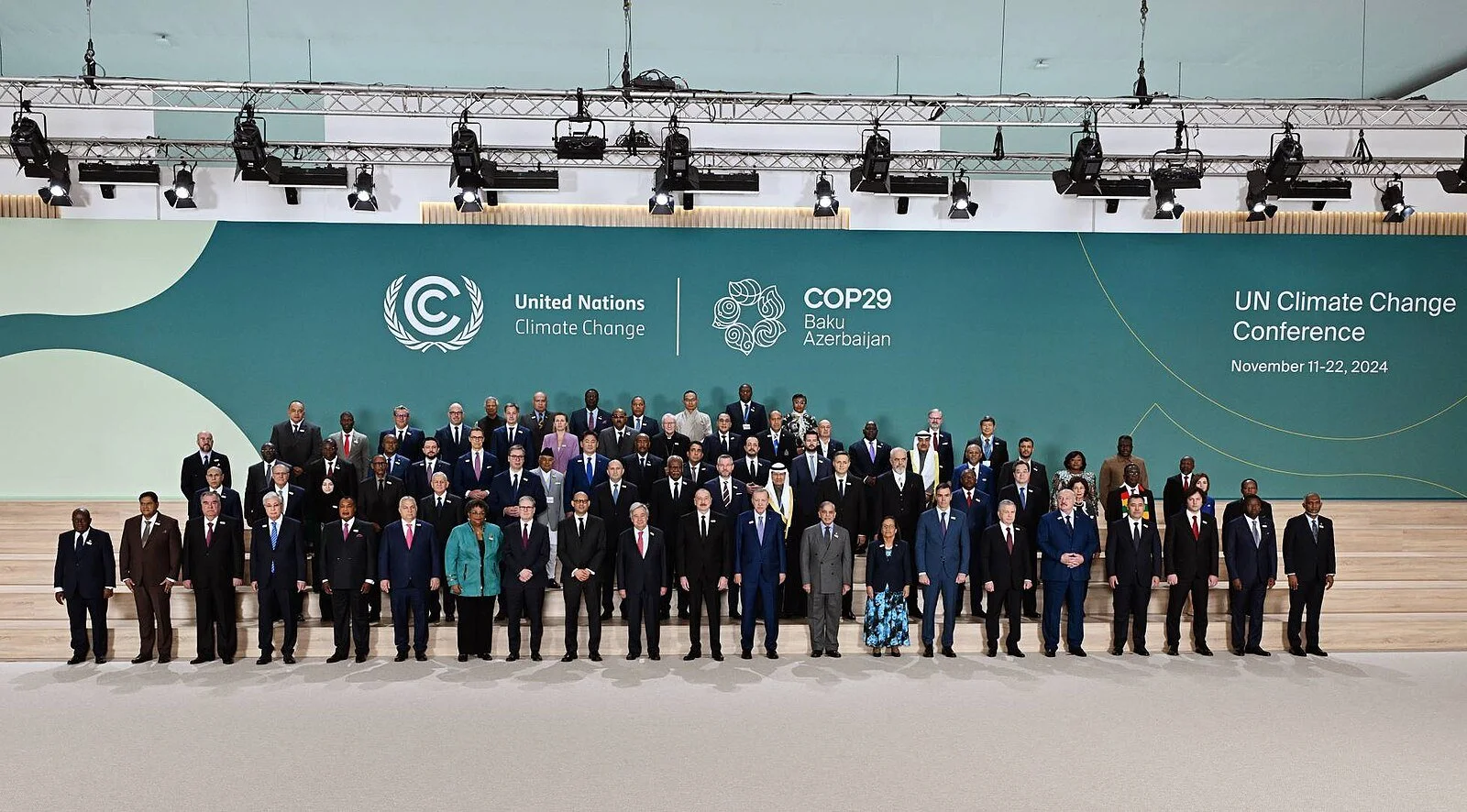Outlook for COP30: Negotiating with the Climate-Sceptic Elephant in the Room
Image from Press Service of the President of the Republic of Azerbaijan licensed via Creative Commons
Following a last-minute rescue of talks from Azerbaijan last year, the Conference of the Parties (COP) gather for their 30th summit, this year hosted in Brazil.
Last year’s deal was salvaged only after intense and drawn-out negotiations; however, even then it sparked its own controversy. The $250 billion climate finance offer was deemed an insult by critics after multiple MEDCs (more economically developed countries) refused to increase their offer. Speaking to The Guardian, Juan Carlos Monterrey Gomez, Panama’s climate envoy, stated that the deal was insufficient: “What we need is at least $5 trillion a year, but what we have asked for is just $1.3 trillion.”
The draft text secured an increased climate finance for developing countries but still fell far short of what experts say is required to limit global warming to the current target of a 1.5°C increase. Some nations warn the current effort would instead push temperatures up by as much as 3°C. The plan allocated a target of $1.3 billion dollars per year by 2035 to enable developing countries to transition to low-carbon economies. Yet, when pressed on if the cap could be increased, leaders of European countries cited inflation, lingering economic consequences of COVID-19, and ongoing global conflicts as excuses for not being able to move on the figure.
COP 30 is set to start on the 10th November in Belem, Brazil. Out of the 198 countries that were meant to have submitted their new national climate plans, only 64 countries have submitted theirs ahead of the conference. This only accounts for about 30% of the global carbon emissions. A much more worrying prospect when you consider greenhouse gas emissions need to be cut by 57% by 2035 to meet the target required.
Since last year, the United States has also formally begun its withdrawal from the Paris Agreement, with the country set to be officially out by January 2026. President Donald Trump signed the executive order shortly after his inauguration in January 2025 , reiterating promises that the US “will drill, baby, drill”. The President, who received $19 million from fossil fuel donors for his inaugural fund, stated that the agreement would “unfairly burden the United States” by imposing excessive costs on the taxpayers, even as the ongoing government shutdown costs an estimated $7 billion a week and leaves millions hungry.
With the US now looking primarily towards fossil fuels, such as "beautiful, clean coal”, forecasts for 2030 regarding renewable power capacity for the US have been cut in half. Additionally, as the International Maritime Organization (IMO) members try to adopt their ‘Net-Zero Framework’, the US has continued to openly threaten economic penalties for any members who try to introduce new measures such as additional port fees on ships and penalties for states who intend to build new fossil fuel infrastructure.
COP 30 needs to be a driving force for sustainable changes to both power generation and funding for developing countries. Even though there is substantial pressure from some major powers to oppose these goals, changes are happening.
Renewables overtook non-renewables as the world’s leading source of electricity this year. China especially has been leading the charge in recent months, whereas the EU and US have continued to use fossil fuels.
The progress is there: it is coming. World leaders need to emphasise action over discussion, even if this means falling out of favour with a certain climate-sceptic American.

